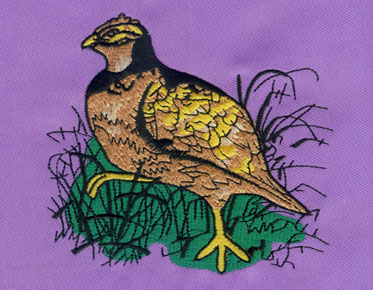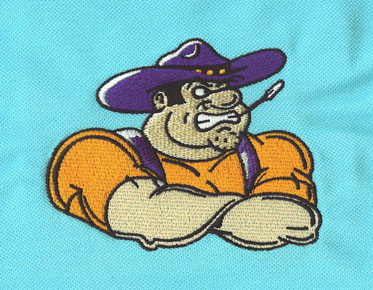How does the Digitizing Process Handle Designs with Special Effects?
The digitizing process for embroidery designs with special effects
such as metallic threads or sequins requires extra attention and precision
compared to basic designs. Digitizing for special effects involves converting a
design into a digital format that embroidery machines can interpret. Below are
the steps and considerations involved in handling designs with special effects:
1. Choosing the Right Software:
The first step is to choose embroidery digitizing software that
supports the creation of special effects. High-end software like Wilcom, Pulse,
and Brother PE-Design allow for the incorporation of various special effects
like metallic threads, sequins, and more.
2. Understanding Material Properties:
Different materials like metallic threads have unique properties. Metallic threads are often more delicate and may require slower machine speeds to avoid breakages. Understanding the properties of the materials is essential to configure the digitizing settings accordingly.
3. Layering and Sequencing:
Incorporating special effects often involves
layering and sequencing. The professional digitizer must understand the order in which the elements of the design
need to be embroidered to create the desired effect. For example, sequins might
need to be layered on top of a base fabric, or metallic threads might be used
for outlining or highlighting.
4. Density and Stitch Types:
The stitch density and type are crucial
considerations for special effects. Using too high a density for metallic
threads may cause thread breakages or needle issues. Selecting the right stitch
type can also affect the final look. Satin stitches, for example, are often
used for shiny or reflective materials like metallic threads to maximize their
reflective qualities. For this issue, you can turn to professional embroidery digitization service like
Eagle Digitizing.
5. Configuring the Machine:
Digitizing for special effects requires
specific machine configurations. For instance, when using metallic threads,
it’s advisable to use a larger needle and to reduce the tension. For sequins,
special attachments or machines with sequin-adding capabilities are needed.
6. Testing and Sample Runs:
It is essential to perform test runs on sample fabric with the same materials intended for the final product. This allows you to fine-tune the digitizing settings and machine configurations to ensure the special effects are executed flawlessly.
7. File Format and Transfer:
Once the design is digitized, it needs to be
saved in a file format compatible with the embroidery machine. The digitized file is then transferred to the embroidery machine,
either through USB, direct connection, or other means.
8. Monitoring the Embroidery Process:
Monitoring the embroidery process is vital,
especially when working with special materials like metallic threads or
sequins, as these materials can sometimes cause issues such as thread breakages
or misalignment of sequins.
In conclusion, handling designs with special
effects like metallic threads or sequins in the digitizing process requires a
deep understanding of materials, mastery of digitizing software, and meticulous
attention to machine configurations and settings. Through careful planning,
testing, and monitoring, embroidery digitizing services can ensure the success of these intricate designs. The
expertise and attention to detail that digitizing services for embroidery bring
to the table are invaluable in achieving stunning embroidery designs with
special effects. Whether it’s metallic threads that require a delicate touch or
sequins that need perfect alignment, employing professional embroidery
digitizing services can elevate the final product to a work of art.



